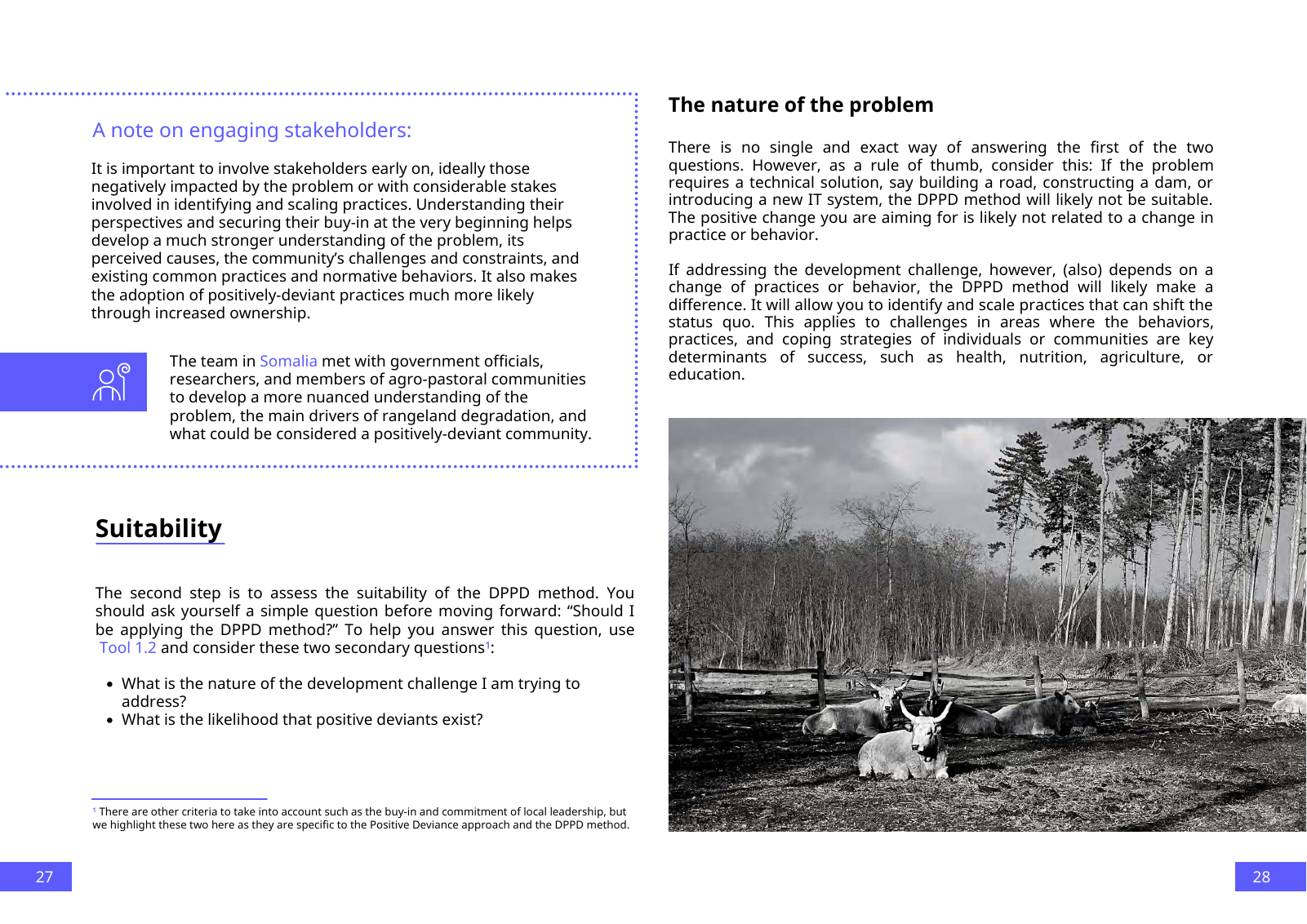Suitability A note on engaging stakeholders It is important to involve stakeholders early on ideally those negatively impacted by the problem or with considerable stakes involved in identifying and scaling practices Understanding their perspectives and securing their buy in at the very beginning helps develop a much stronger understanding of the problem its perceived causes the community s challenges and constraints and existing common practices and normative behaviors It also makes the adoption of positively deviant practices much more likely through increased ownership The team in Somalia met with government officials researchers and members of agro pastoral communities to develop a more nuanced understanding of the problem the main drivers of rangeland degradation and what could be considered a positively deviant community What is the nature of the development challenge I am trying to address What is the likelihood that positive deviants exist The second step is to assess the suitability of the DPPD method You should ask yourself a simple question before moving forward Should I be applying the DPPD method To help you answer this question use Tool 1 2 and consider these two secondary questions The nature of the problem There is no single and exact way of answering the first of the two questions However as a rule of thumb consider this If the problem requires a technical solution say building a road constructing a dam or introducing a new IT system the DPPD method will likely not be suitable The positive change you are aiming for is likely not related to a change in practice or behavior If addressing the development challenge however also depends on a change of practices or behavior the DPPD method will likely make a difference It will allow you to identify and scale practices that can shift the status quo This applies to challenges in areas where the behaviors practices and coping strategies of individuals or communities are key determinants of success such as health nutrition agriculture or education There are other criteria to take into account such as the buy in and commitment of local leadership but we highlight these two here as they are specific to the Positive Deviance approach and the DPPD method 27 28

Hinweis: Dies ist eine maschinenlesbare No-Flash Ansicht.
Klicken Sie hier um zur Online-Version zu gelangen.
Klicken Sie hier um zur Online-Version zu gelangen.